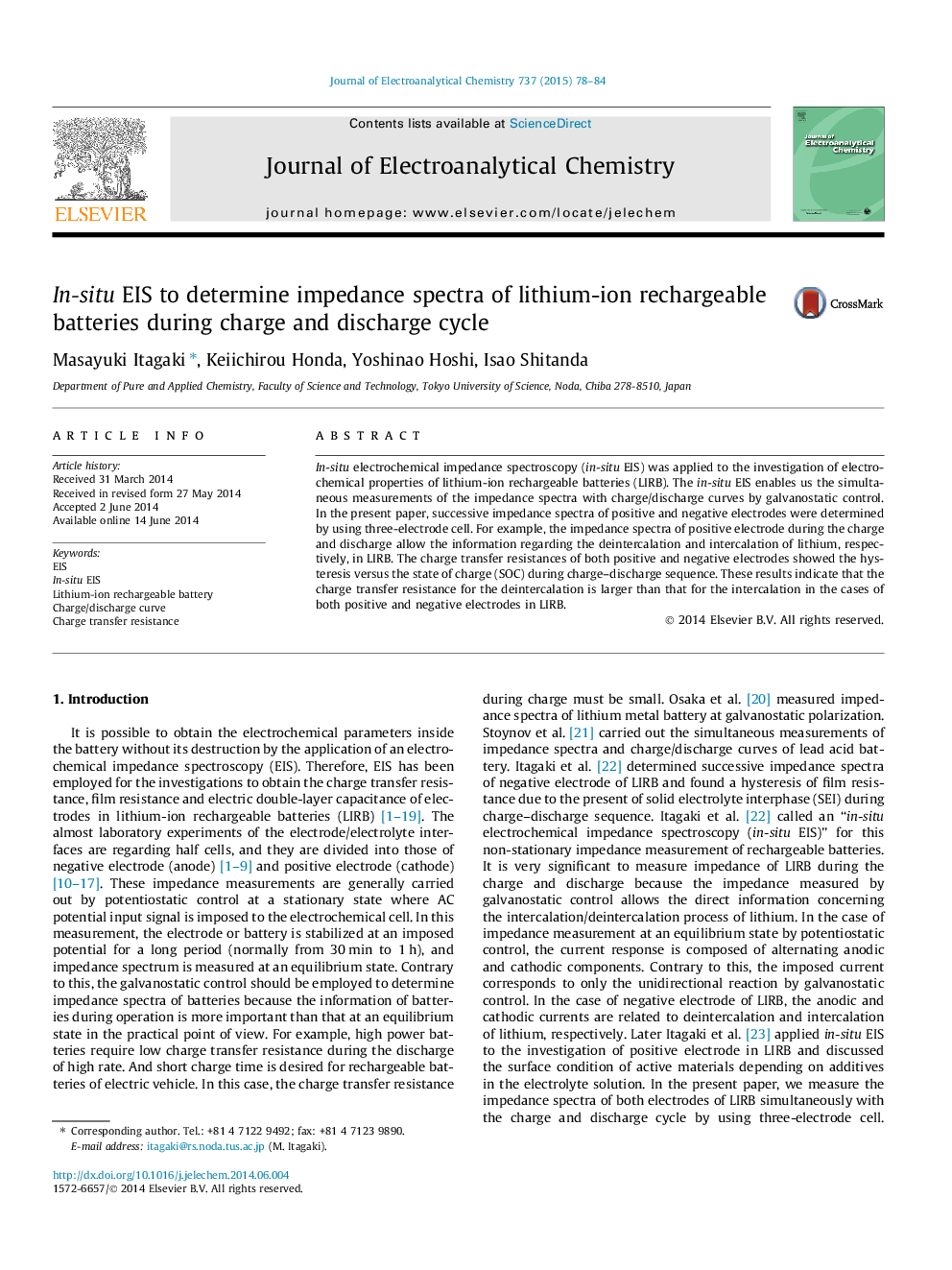| کد مقاله | کد نشریه | سال انتشار | مقاله انگلیسی | نسخه تمام متن |
|---|---|---|---|---|
| 218514 | 463205 | 2015 | 7 صفحه PDF | دانلود رایگان |

• In-situ EIS was applied to the evaluation of LIRB.
• The successive impedance spectra were measured during charge–discharge sequence.
• The Rct for the deintercalation of lithium was larger than that for the intercalation.
In-situ electrochemical impedance spectroscopy (in-situ EIS) was applied to the investigation of electrochemical properties of lithium-ion rechargeable batteries (LIRB). The in-situ EIS enables us the simultaneous measurements of the impedance spectra with charge/discharge curves by galvanostatic control. In the present paper, successive impedance spectra of positive and negative electrodes were determined by using three-electrode cell. For example, the impedance spectra of positive electrode during the charge and discharge allow the information regarding the deintercalation and intercalation of lithium, respectively, in LIRB. The charge transfer resistances of both positive and negative electrodes showed the hysteresis versus the state of charge (SOC) during charge–discharge sequence. These results indicate that the charge transfer resistance for the deintercalation is larger than that for the intercalation in the cases of both positive and negative electrodes in LIRB.
Journal: Journal of Electroanalytical Chemistry - Volume 737, 15 January 2015, Pages 78–84